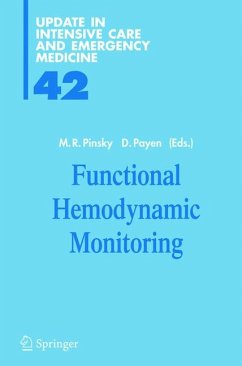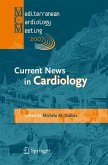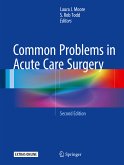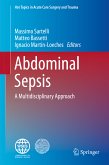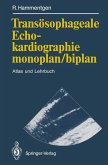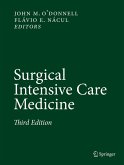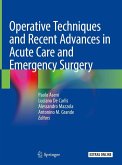Functional Hemodynamic Monitoring (eBook, PDF)
Redaktion: Pinsky, Michael R.; Payen, Didier
185,95 €
185,95 €
inkl. MwSt.
Sofort per Download lieferbar

93 °P sammeln
185,95 €
Als Download kaufen

185,95 €
inkl. MwSt.
Sofort per Download lieferbar

93 °P sammeln
Jetzt verschenken
Alle Infos zum eBook verschenken
185,95 €
inkl. MwSt.
Sofort per Download lieferbar
Alle Infos zum eBook verschenken

93 °P sammeln
Functional Hemodynamic Monitoring (eBook, PDF)
Redaktion: Pinsky, Michael R.; Payen, Didier
- Format: PDF
- Merkliste
- Auf die Merkliste
- Bewerten Bewerten
- Teilen
- Produkt teilen
- Produkterinnerung
- Produkterinnerung

Bitte loggen Sie sich zunächst in Ihr Kundenkonto ein oder registrieren Sie sich bei
bücher.de, um das eBook-Abo tolino select nutzen zu können.
Hier können Sie sich einloggen
Hier können Sie sich einloggen
Sie sind bereits eingeloggt. Klicken Sie auf 2. tolino select Abo, um fortzufahren.

Bitte loggen Sie sich zunächst in Ihr Kundenkonto ein oder registrieren Sie sich bei bücher.de, um das eBook-Abo tolino select nutzen zu können.
This is the newest volume in the softcover series "Update in Intensive Care Medicine".
It takes a novel, practical approach to analyzing hemodynamic monitoring, focusing on the patient and outcomes based on disease, treatment options and relevance of monitoring to direct patient care. It will rapidly become a classic in the approach to patient monitoring and management during critical illness.
- Geräte: PC
- ohne Kopierschutz
- eBook Hilfe
- Größe: 3.42MB
Andere Kunden interessierten sich auch für
![Current News in Cardiology (eBook, PDF) Current News in Cardiology (eBook, PDF)]() Current News in Cardiology (eBook, PDF)73,95 €
Current News in Cardiology (eBook, PDF)73,95 €![Common Problems in Acute Care Surgery (eBook, PDF) Common Problems in Acute Care Surgery (eBook, PDF)]() Common Problems in Acute Care Surgery (eBook, PDF)97,95 €
Common Problems in Acute Care Surgery (eBook, PDF)97,95 €![The Local Cardiac Renin-Angiotensin Aldosterone System (eBook, PDF) The Local Cardiac Renin-Angiotensin Aldosterone System (eBook, PDF)]() The Local Cardiac Renin-Angiotensin Aldosterone System (eBook, PDF)106,95 €
The Local Cardiac Renin-Angiotensin Aldosterone System (eBook, PDF)106,95 €![Abdominal Sepsis (eBook, PDF) Abdominal Sepsis (eBook, PDF)]() Abdominal Sepsis (eBook, PDF)81,95 €
Abdominal Sepsis (eBook, PDF)81,95 €- -26%11
![Transösophageale Echokardiographie monoplan/biplan (eBook, PDF) Transösophageale Echokardiographie monoplan/biplan (eBook, PDF)]() Ralf HammentgenTransösophageale Echokardiographie monoplan/biplan (eBook, PDF)36,99 €
Ralf HammentgenTransösophageale Echokardiographie monoplan/biplan (eBook, PDF)36,99 € ![Surgical Intensive Care Medicine (eBook, PDF) Surgical Intensive Care Medicine (eBook, PDF)]() Surgical Intensive Care Medicine (eBook, PDF)121,95 €
Surgical Intensive Care Medicine (eBook, PDF)121,95 €![Operative Techniques and Recent Advances in Acute Care and Emergency Surgery (eBook, PDF) Operative Techniques and Recent Advances in Acute Care and Emergency Surgery (eBook, PDF)]() Operative Techniques and Recent Advances in Acute Care and Emergency Surgery (eBook, PDF)169,95 €
Operative Techniques and Recent Advances in Acute Care and Emergency Surgery (eBook, PDF)169,95 €-
-
-
This is the newest volume in the softcover series "Update in Intensive Care Medicine".
It takes a novel, practical approach to analyzing hemodynamic monitoring, focusing on the patient and outcomes based on disease, treatment options and relevance of monitoring to direct patient care. It will rapidly become a classic in the approach to patient monitoring and management during critical illness.
It takes a novel, practical approach to analyzing hemodynamic monitoring, focusing on the patient and outcomes based on disease, treatment options and relevance of monitoring to direct patient care. It will rapidly become a classic in the approach to patient monitoring and management during critical illness.
Dieser Download kann aus rechtlichen Gründen nur mit Rechnungsadresse in A, B, BG, CY, CZ, D, DK, EW, E, FIN, F, GR, HR, H, IRL, I, LT, L, LR, M, NL, PL, P, R, S, SLO, SK ausgeliefert werden.
Produktdetails
- Produktdetails
- Verlag: Springer Berlin Heidelberg
- Seitenzahl: 420
- Erscheinungstermin: 11. August 2005
- Englisch
- ISBN-13: 9783540269007
- Artikelnr.: 37367318
- Verlag: Springer Berlin Heidelberg
- Seitenzahl: 420
- Erscheinungstermin: 11. August 2005
- Englisch
- ISBN-13: 9783540269007
- Artikelnr.: 37367318
- Herstellerkennzeichnung Die Herstellerinformationen sind derzeit nicht verfügbar.
Michael R. Pinsky, MD is a professor of Critical Care medicine, Bioengineering and Anaesthesiology at the University of Pittsburgh and Dr hc from the University of Paris (La Sorbonne). He is considered an expert in hemodynamic monitoring, cardiovascular and pulmonary physiology and the treatments of cardio-respiratory diseases, including septic shock, ARDS and transplantation. Didier Payen, MD is a professor and chairman of Anaesthesiology and Critical Care Medicine at Laribosiere Hospital, Paris and the president of the European Society of Intensive care Medicine. He is considered an expert in hemodynamic monitoring, organ transplantation, nitric oxide metabolism and treatment and cardiovascular physiology.
Functional Hemodynamic Monitoring: Foundations and Future.- Therapeutic goals.- Defining Hemodynamic Instability.- Determinants of Blood Flow and Organ Perfusion.- Determining Effectiveness of Regional Perfusion.- Microcirculatory and Mitochondrial Distress Syndrome (MMDS): A New Look at Sepsis.- 'Adequate' Hemodynamics: A Question of Time?.- Limits and Applications of Hemodynamic Monitoring.- Arterial Pressure: A Personal View.- Central Venous Pressure: Uses and Limitations.- Pulmonary Artery Occlusion Pressure: Measurement, Significance, and Clinical Uses.- Cardiac Output by Thermodilution and Arterial Pulse Contour Techniques.- Clinical Value of Intrathoracic Volumes from Transpulmonary Indicator Dilution.- Methodology and Value of Assessing Extravascular Lung Water.- Arterial Pulse Contour Analysis: Applicability to Clinical Routine.- Arterial Pulse Power Analysis: The LiDCO? plus System.- Esophageal Doppler monitoring.- Splanchnic Blood Flow.- Measurement of Oxygen Derived Variables and Cardiac Performance.- Microcirculatory Blood Flow: Videomicroscopy.- Mixed Venous Oxygen Saturation (SvO2).- Central Venous Oxygen Saturation (ScvO2).- DO2/VO2 relationships.- Cardiac Preload Evaluation Using Echocardiographic Techniques.- Right Ventricular End-Diastolic Volume.- Assessment of Fluid Responsiveness.- Fluid Therapy of Tissue Hypoperfusion.- The Use of Central Venous Pressure in Critically Ill Patients.- Arterial Pressure Variation during Positive-pressure Ventilation.- Arterial Pulse Pressure Variation During Positive Pressure Ventilation and Passive Leg Raising.- Development of Treatment Algorithms.- Standardization of Care by Defining Endpoints of Resuscitation.- Protocolized Cardiovascular Management Based on Ventricular-arterial Coupling.- Cost Effectivenessof Monitoring Techniques.
Functional Hemodynamic Monitoring: Foundations and Future.- Therapeutic goals.- Defining Hemodynamic Instability.- Determinants of Blood Flow and Organ Perfusion.- Determining Effectiveness of Regional Perfusion.- Microcirculatory and Mitochondrial Distress Syndrome (MMDS): A New Look at Sepsis.- 'Adequate' Hemodynamics: A Question of Time?.- Limits and Applications of Hemodynamic Monitoring.- Arterial Pressure: A Personal View.- Central Venous Pressure: Uses and Limitations.- Pulmonary Artery Occlusion Pressure: Measurement, Significance, and Clinical Uses.- Cardiac Output by Thermodilution and Arterial Pulse Contour Techniques.- Clinical Value of Intrathoracic Volumes from Transpulmonary Indicator Dilution.- Methodology and Value of Assessing Extravascular Lung Water.- Arterial Pulse Contour Analysis: Applicability to Clinical Routine.- Arterial Pulse Power Analysis: The LiDCO? plus System.- Esophageal Doppler monitoring.- Splanchnic Blood Flow.- Measurement of Oxygen Derived Variables and Cardiac Performance.- Microcirculatory Blood Flow: Videomicroscopy.- Mixed Venous Oxygen Saturation (SvO2).- Central Venous Oxygen Saturation (ScvO2).- DO2/VO2 relationships.- Cardiac Preload Evaluation Using Echocardiographic Techniques.- Right Ventricular End-Diastolic Volume.- Assessment of Fluid Responsiveness.- Fluid Therapy of Tissue Hypoperfusion.- The Use of Central Venous Pressure in Critically Ill Patients.- Arterial Pressure Variation during Positive-pressure Ventilation.- Arterial Pulse Pressure Variation During Positive Pressure Ventilation and Passive Leg Raising.- Development of Treatment Algorithms.- Standardization of Care by Defining Endpoints of Resuscitation.- Protocolized Cardiovascular Management Based on Ventricular-arterial Coupling.- Cost Effectivenessof Monitoring Techniques.
